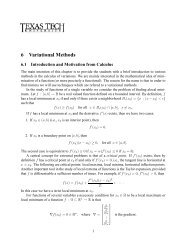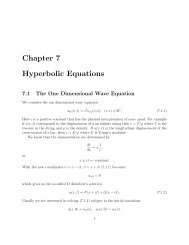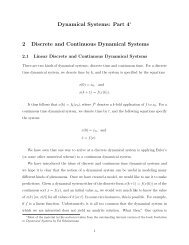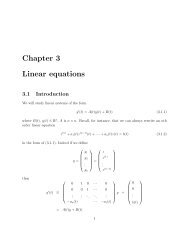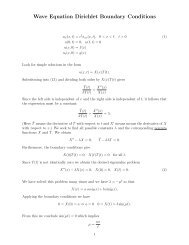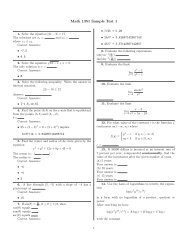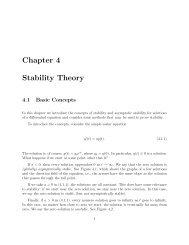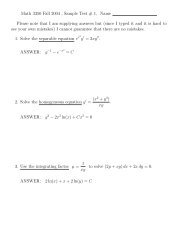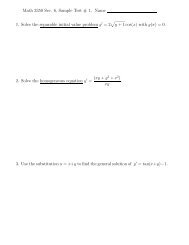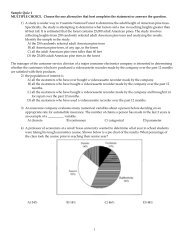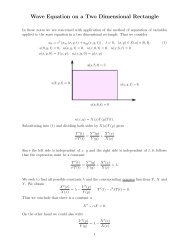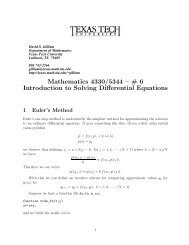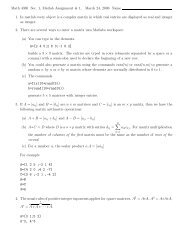Chapter 6 Partial Differential Equations
Chapter 6 Partial Differential Equations
Chapter 6 Partial Differential Equations
Create successful ePaper yourself
Turn your PDF publications into a flip-book with our unique Google optimized e-Paper software.
6.2. LINEAR AND QUASILINEAR EQUATIONS OF FIRST ORDER 27<br />
Let us demonstrate that u − ϕ(x − c(u)t) = 0 implicitly defines a solution u(x, t) ofthe<br />
equation. First, differentiating with respect to x, wehave<br />
u x = ϕ ′ (x − c(u)t) [ x − c(u)t ] = x ϕ′ (x − c(u)t) [ 1 − c ′ (u)u x t ]<br />
and we can solve for u x<br />
u x =<br />
ϕ ′ (x − c(u)t)<br />
1+tc ′ (u)ϕ ′ (x − c(u)t) . (6.2.20)<br />
Now we differentiate with respect to t, to obtain<br />
u t = ϕ ′ (x − c(u)t) [ x − c(u)t ] = t −ϕ′ (x − c(u)t) [ tc ′ (u)u t + c(u) ]<br />
and we can solve for u t<br />
u t = −c(u)ϕ′ (x − c(u)t)<br />
1+tc ′ (u)ϕ ′ (x − c(u)t) . (6.2.21)<br />
So, combining (6.2.20) and (6.2.21), we have<br />
u t + c(u)u x =<br />
−c(u)ϕ′ (x − c(u)t)<br />
1+tc ′ (u)ϕ ′ (x − c(u)t) + c(u) ϕ ′ (x − c(u)t)<br />
1+tc ′ (u)ϕ ′ (x − c(u)t)<br />
= −c(u)ϕ′ (x − c(u)t)+c(u)ϕ ′ (x − c(u)t)<br />
=0.<br />
1+tc ′ (u)ϕ ′ (x − c(u)t)<br />
and<br />
u(x, 0) = ϕ(x − 0) = ϕ(x).<br />
t<br />
t =1<br />
(ξ,0)<br />
x<br />
Solution Exists Only for t1 since the characteristics<br />
cross beyond that line and the values on u on the intersecting characteristics are different –



